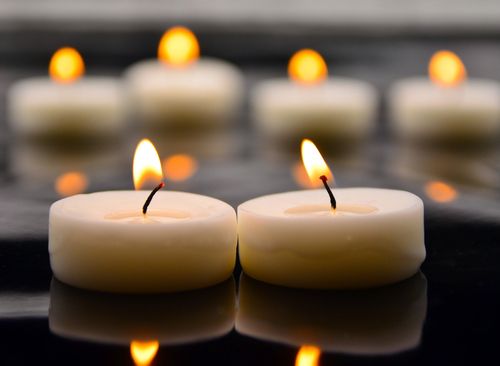 This might seem like an obvious statement, but everyone dies at some point. It is often a tradition for the life or death of the deceased to be observed with a funeral that includes rituals or practices associated with a particular religion or faith. Many people leave specific instructions or wishes for how their deaths should be handled, including those who consider themselves agnostic or atheist. Here are some things to consider.
This might seem like an obvious statement, but everyone dies at some point. It is often a tradition for the life or death of the deceased to be observed with a funeral that includes rituals or practices associated with a particular religion or faith. Many people leave specific instructions or wishes for how their deaths should be handled, including those who consider themselves agnostic or atheist. Here are some things to consider.
Making a Plan
There’s no one particular theme or format that a non-religious service must follow. Expect a ceremony that is highly personalized based on the departed or possibly the people that were closest. Just as with a religious funeral, this is an opportunity for loved ones to gather, mourn, express condolences and honor the life of the deceased. A secular ceremony may have similar elements to that of a faith-based one, but these elements are either irreligious or not tied to a specific faith.
Choosing a Venue
Churches and other religious buildings are common places for funeral services. For a non-faith-based service, consider choosing a venue that is not tied to a particular religion:
- Community buildings
- Historic sites or spaces
- Crematorium or funeral home
- Outdoors
- Specific burial sites not affiliated with a church
A crematorium or funeral home may be a great place to start your search if these buildings themselves are not suitable for the service. The operators may be able to recommend nearby places. Did the late person have a love for the beach or other coastal area? Consider conducting the ceremony by the shore.
Developing a Program
Religious programs often include a sermon offered by associated clergy and selections such as hymns and prayers. Some alternatives to prayers and sermons include the reading of literary excerpts or poems that may have had special meaning to the deceased. Consider the playing or performance of the deceased’s favorite song. There are also several popular songs for funerals that have no faith affiliations:
- “Candle in the Wind” – Elton John
- “My Way” – Frank Sinatra
- “What A Wonderful World” – Louis Armstrong
- “You Raise Me Up” – Josh Groban
- “Over the Rainbow” – Eva Cassidy
- “Smile” – Nat King Cole
The service itself may be expanded to allow the bereaved to share pleasant remembrances about the dearly departed. Look for other ways to inject some of the deceased’s personality into the service. This could include a slide show of important milestones from the person’s life. Another option is to have attendees forgo black as attire and wear bright colors or hues that the dead person loved.
Preparing for Burial
Some belief systems have firm rules about the handling of a body during a funeral, especially as it relates to the afterlife. For a non-religious ceremony, there probably won’t be a focus on an afterlife, so it’s important to know if the deceased left instructions on burial. In the event that no instructions were left behind, consider a green or natural burial. In this scenario, the body is interred in a biodegradable coffin. Typically embalming is skipped, so you should plan for a closed casket ceremony and interment within 24 to 48 hours.
Making Charitable Contributions
In various types of funerals, mourners often donate bouquets of flowers to adorn a casket, both at a service and graveside. In lieu of donating flowers, it may be a good idea to invite attendees to donate to charities that were important to the deceased. Making these contributions are a great way to honor a person’s life. It also shows tremendous respect for the dead person’s identity, personality and values.
When you’re responsible for officiating or planning a non-religious funeral, there are changes you can make, both big and small. Look for ways to honor the deceased in many of the options. Making choices that reflect the late person’s life is a good foundation for planning the service.